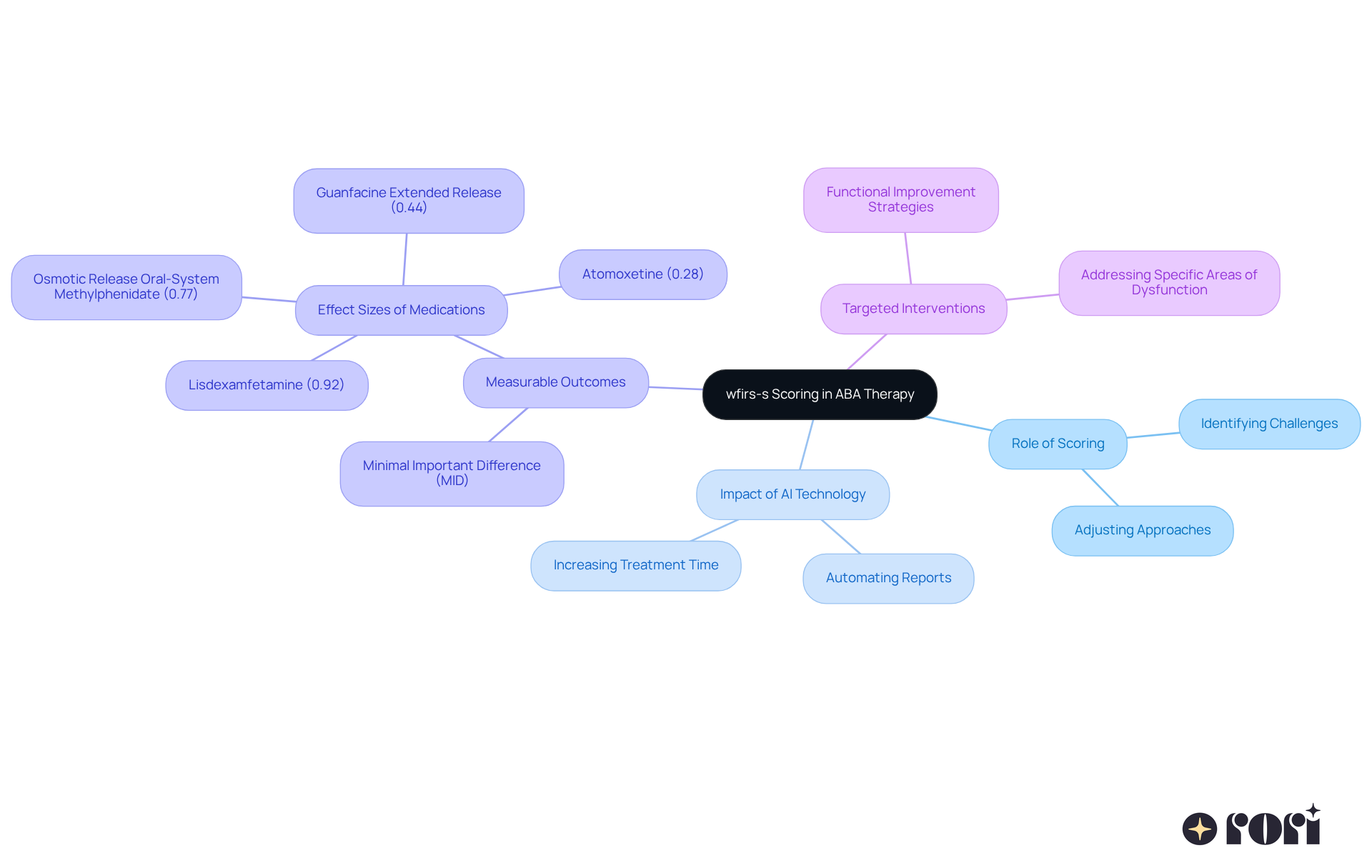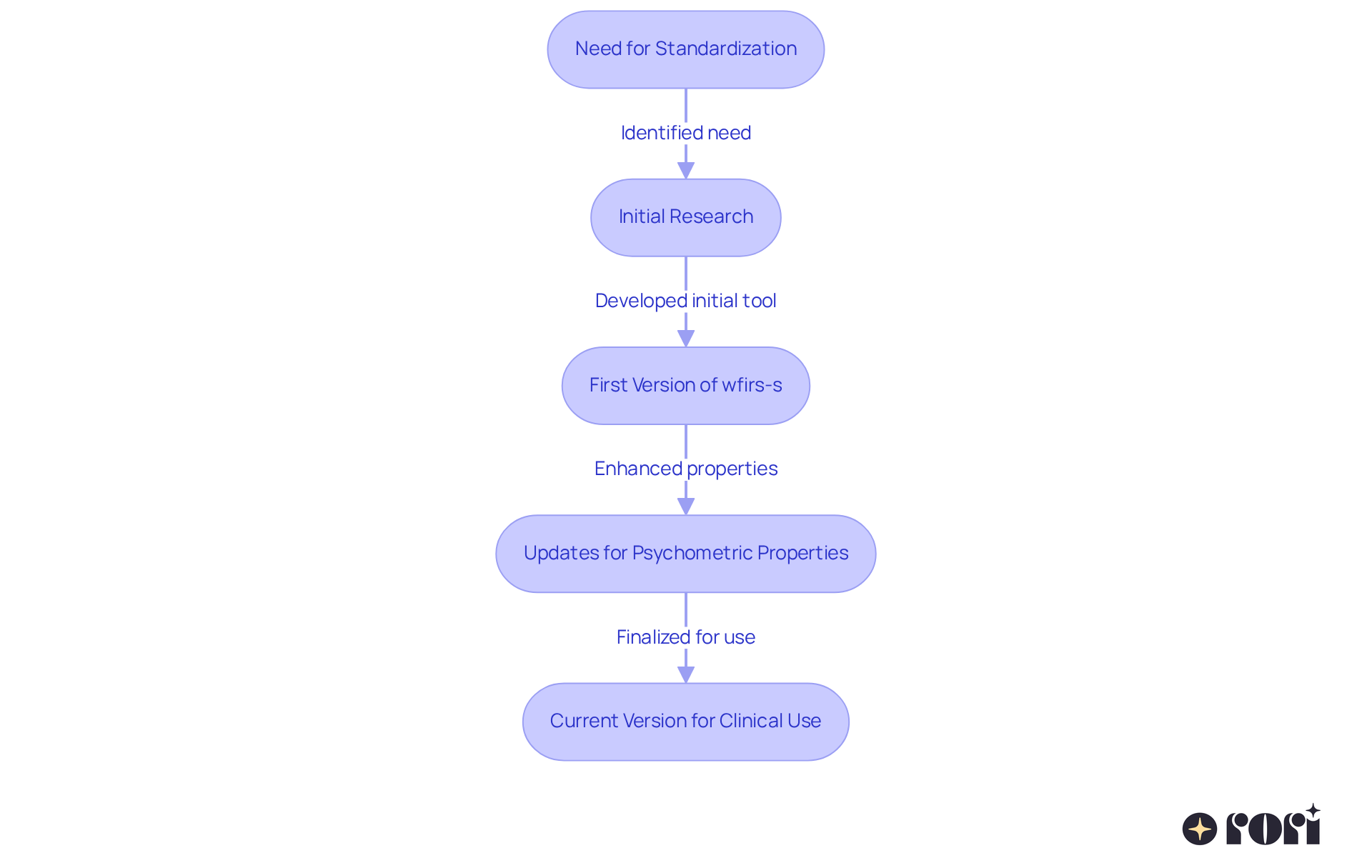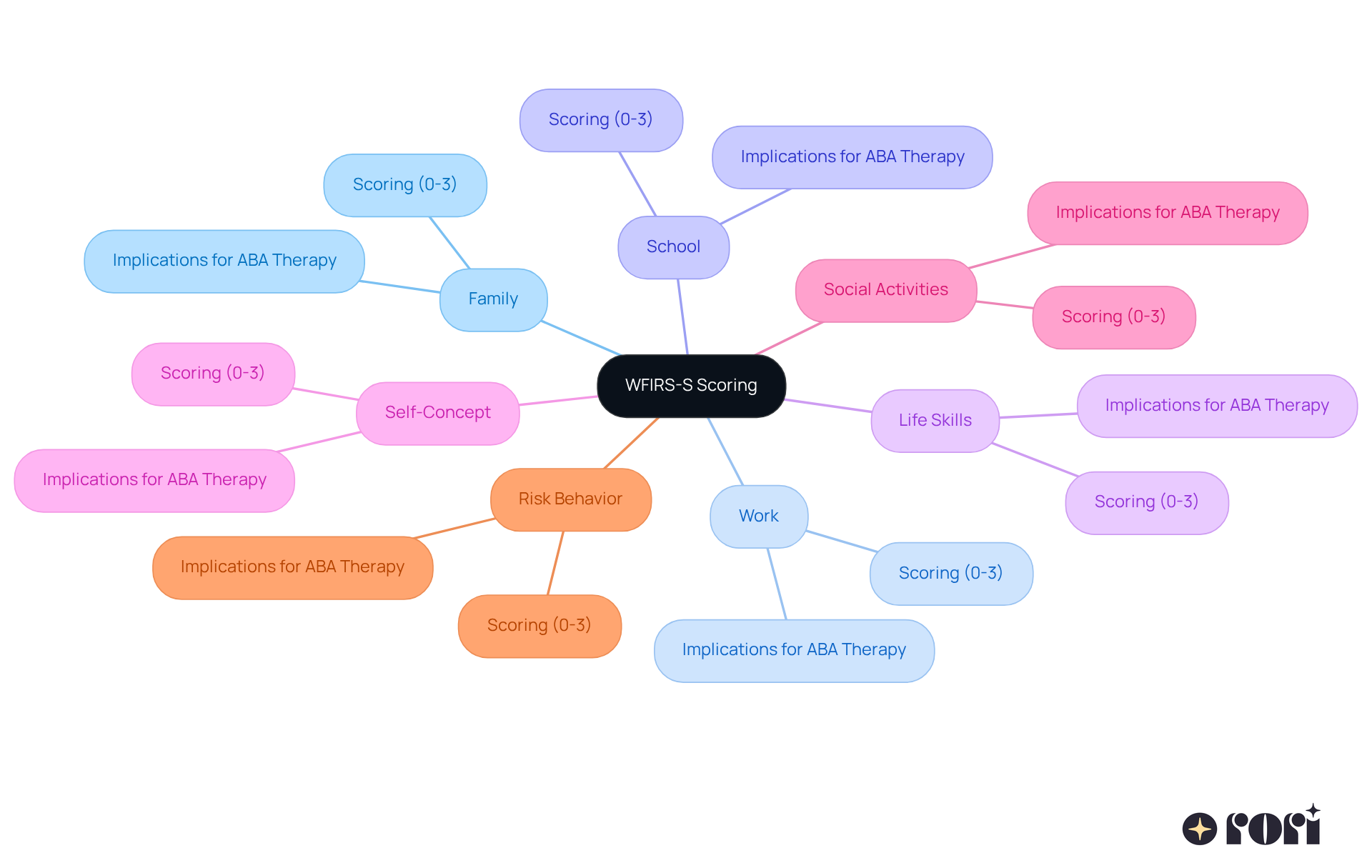Understanding the complexities of child development, especially when it comes to ADHD and autism, is so important for parents and clinicians alike. The Weiss Functional Impairment Rating Scale-Self (wfirs-s scoring) is a fantastic tool that not only highlights a child's everyday challenges but also helps shape personalized treatment strategies within Applied Behavior Analysis (ABA) therapy.
As we dive into this scoring system, it brings up an interesting thought: how can a deeper understanding of functional impairment really enhance therapeutic outcomes? And how can it empower caregivers on their journey?
Let’s explore this together! By sharing insights and experiences, we can create a supportive community that understands the ups and downs of parenting a child with unique needs. We’re here to help you every step of the way!
The Weiss Functional Impairment Rating Scale-Self is a handy tool for parents looking to understand their child's challenges with ADHD. It features 50 items rated on a simple 4-point scale, allowing you to share how often your child faces difficulties in areas like family life, school, socializing, and daily tasks. This scoring system, known as wfirs-s scoring, helps clinicians see how behavioral and emotional hurdles affect your child's everyday functioning, making it a key part of Applied Behavior Analysis (ABA) therapy for kids with autism.
By taking a closer look at functional impairment, this tool helps create personalized treatment plans that cater to each child's unique needs. This tailored approach can really boost therapeutic outcomes and support their growth journey. Plus, with the addition of AI-driven progress report automation, clinicians can save a whopping 50% of their time! This means they can focus more on crafting individualized plans and setting measurable goals.
This efficiency is crucial for developing effective strategies for individuals of all ages facing challenges like Autism Spectrum Disorders, ADHD, and learning disabilities. It ensures that those who can benefit from the wfirs-s scoring system receive the support they need. So, let’s explore this together! If you have any questions or experiences to share, we’re here to help you every step of the way!

In the world of ABA therapy, the scoring system plays a crucial role in figuring out how well interventions are working. It’s all about changing specific behaviors through reinforcement techniques, and understanding a young person’s functional challenges is key to crafting effective treatment plans. By using wfirs-s scoring, clinicians can pinpoint areas where a young person might be struggling, such as social skills or school performance, and adjust their therapeutic approaches accordingly. This data-driven method ensures that interventions are not just personalized but also measurable, allowing for ongoing evaluation and adjustments to help the individual thrive.
And here’s something exciting: with the latest AI technology, Rori Care - ABA Therapy is making ABA practices even more efficient by automating progress report generation. This innovation can free up to 50% more time for direct child treatment, letting clinicians focus on providing personalized care that truly benefits the child’s development. Research shows that a minimal important difference (MID) for the wfirs-s scoring is a change in the total mean score of 0.25, which emphasizes the importance of measurable outcomes in personalized treatment plans.
Experts in ABA therapy, including MDW, emphasize the need for a standardized definition of performance enhancement and remission, underscoring the importance of understanding performance limitations. Plus, studies reveal that targeted interventions can lead to significant improvements in functional areas, with medications like lisdexamfetamine showing effect sizes of 0.92. For example, case studies have demonstrated how effective scoring can enhance therapeutic methods, ultimately fostering better developmental progress for youth. This efficiency not only boosts clinician effectiveness but also empowers caregivers by giving them clearer insights into their child’s progress and the strategies being used.
Let’s explore this together! If you’re a parent navigating these waters, know that you’re not alone. We’re here to help you every step of the way!

Creating reliable tools to measure functional impairment related to ADHD and similar conditions is no small feat! The assessment tool we’re discussing came about from a genuine need to standardize how we evaluate the impact of behavioral issues on daily life. It’s been a journey, and extensive research has shown that wfirs-s scoring really works in distinguishing between those with ADHD and those without.
Over the years, this scale has seen several updates, all aimed at enhancing its psychometric properties for wfirs-s scoring. This means it’s not just a tool; it’s a resource that clinicians can trust when working with children on the autism spectrum. Isn’t it amazing how our understanding of performance impairment has evolved? It really highlights the importance of personalized interventions in ABA therapy.
Let’s explore this together! If you’re navigating these challenges, know that you’re not alone, and there are resources available to help you every step of the way!

The WFIRS-S scoring is a comprehensive tool designed to evaluate how well young people are functioning across various aspects of their lives. With 50 items covering seven key areas—Family, Work, School, Life Skills, Self-Concept, Social Activities, and Risk Behavior—this instrument helps us understand the challenges youth face. Each item is rated on a scale from 0 (never) to 3 (very often), giving us a clearer picture of the frequency and severity of their struggles. This WFIRS-S scoring can be looked at as a total score or broken down by individual areas, offering a well-rounded view of a person's abilities.
In the world of ABA therapy, this detailed breakdown is incredibly helpful. It allows clinicians to identify specific concerns, making it easier to create targeted interventions that address the unique challenges each young person faces. For instance, if a child scores high in the Social Activities area, therapists can focus on enhancing social skills with tailored strategies. Plus, tracking progress over time through these scores ensures that interventions remain effective and can adapt to the child's changing needs, especially when caregivers are involved in the process.
Did you know that statistics show 90% of young individuals make significant progress when recommended hours are fully utilized with active caregiver participation? This really highlights the importance of tools like the WFIRS. Experts agree that the areas covered by the WFIRS-S scoring are vital for accurately assessing young people's functional abilities, ultimately guiding personalized treatment plans that foster independence and improve overall quality of life. And here’s something exciting: integrating AI into progress report generation not only boosts therapy efficiency but also frees up 50% more time for direct child treatment. This means more focused and impactful therapy sessions for our kids!
Let’s explore this together! If you’re a parent navigating these challenges, remember that you’re not alone. We’re here to help you every step of the way!

The wfirs-s scoring system is truly a game-changer in ABA therapy! It offers a structured way to assess and understand the functional challenges that children with ADHD and autism face. This tool shines a light on the specific hurdles these young ones encounter in their daily lives, helping to craft personalized treatment strategies that cater to their unique needs.
Throughout this article, we’ve highlighted just how significant wfirs-s scoring is. It plays a crucial role in enhancing therapeutic outcomes. By helping clinicians identify areas where children struggle and track their progress over time, this scoring system ensures that interventions are not only targeted but also effective. Plus, with the integration of AI technology, practitioners can spend more time on direct treatment while still keeping an eye on measurable results.
Ultimately, we can’t stress enough how important wfirs-s scoring is in behavioral therapy. It empowers both clinicians and caregivers to nurture meaningful growth and development in children facing challenges. By embracing tools like wfirs-s scoring, we can all work together to create a supportive environment that promotes independence and enhances the overall quality of life for these young individuals.
Let’s explore this journey together! We’re here to help you every step of the way!
What is the wfirs-s scoring system?
The wfirs-s scoring system, or Weiss Functional Impairment Rating Scale-Self, is a tool designed to help parents understand their child's challenges with ADHD. It consists of 50 items rated on a 4-point scale, assessing difficulties in areas such as family life, school, socializing, and daily tasks.
How does wfirs-s scoring benefit clinicians?
wfirs-s scoring helps clinicians identify how behavioral and emotional challenges impact a child's everyday functioning. This information is crucial for creating personalized treatment plans tailored to each child's unique needs, ultimately improving therapeutic outcomes.
How does wfirs-s scoring support children with autism?
By focusing on functional impairment, wfirs-s scoring aids in developing individualized treatment plans that support the growth and development of children with autism, enhancing their overall therapeutic experience.
What is the advantage of AI-driven progress report automation in wfirs-s scoring?
AI-driven progress report automation can save clinicians up to 50% of their time, allowing them to concentrate more on creating individualized plans and setting measurable goals for their patients.
Who can benefit from the wfirs-s scoring system?
Individuals of all ages facing challenges such as Autism Spectrum Disorders, ADHD, and learning disabilities can benefit from the wfirs-s scoring system, ensuring they receive the necessary support for their specific needs.